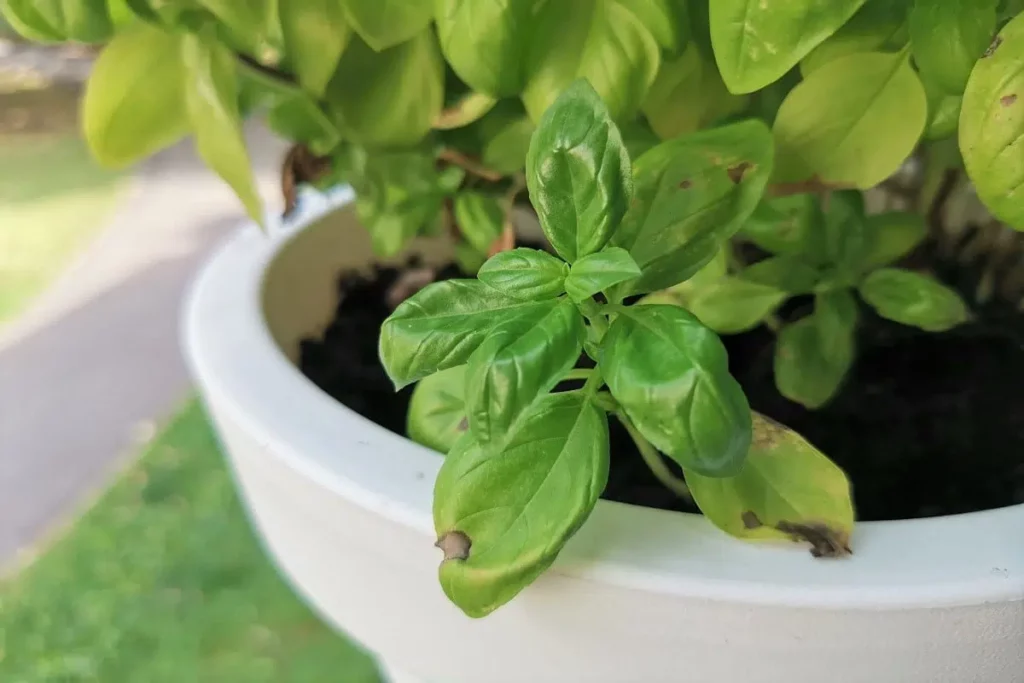Basil is probably one of the most popular seasoning herbs. It is impossible to imagine Mediterranean cuisine without it. The herb is relatively easy to cultivate. However, the location – and thus the question of whether sun or shade – is crucial.
- Basil needs sun
- in the shade grows the culinary herb poorly
- Culture in a pot or tub ideal
King herb among herbs
Basil (Ocimum basilicum) is also known as basil herb or king herb. There are over 35 different species worldwide and they all originate from warm and tropical areas. This origin already suggests the needs of the plant. To grow, the herb needs warmth. Even at temperatures below 15 °C, growth is severely restricted, and if temperatures fall even below 10 °C, the basil will no longer grow.
Note: Basil is well suited for mixed culture with tomatoes and cucumbers. The fragrance keeps pests away from tomato plants and prevents mildew infestation in cucumbers.
Contents
Needs sun
It is the location that mainly affects the growth and flowering of the king weed. It does not matter whether a culture in the bed or tub / pot on the balcony or terrace. All species need plenty of sun and warmth for healthy growth. A place in the shade is less suitable for the culture. The herb would react very sensitively to the cool prevailing temperatures and correspondingly higher humidity. Sooner or later, the basil will die. When choosing a location, however, it is not only sun or shade that is important, but likewise
- a warm, bright place
- combined with plenty of light
- at least six hours of sun in summer
- protected from the wind
- but still airy
- protection from heavy downpours
- temperatures above 16 °C
- Guarantee for lush and healthy growth
- deep, well-drained soil rich in nutrients and humus
- ideal pH value 6.5 to 7.5
- moist, but not waterlogged

Note: The sunnier the mullein, the more aromatic the leaves become, as the content of essential oils in the plant parts increases. However, in just very hot and sunny summers is quite appropriate half-day light shade, but not full shade.
Bed or tub
The bed, whether in the sun or in the shade, is not always the best location for the aromatic herb. Better is a culture in a pot or tub. Here are good conditions for growth. Thus, the herb can also find its place on the windowsill. Here too it needs
- a sunny location and
- temperatures between 16 and 22 °C
However, the pots should move outdoors in the summer, because the aroma becomes stronger in the fresh air and sun. For this purpose, the potted plants can be slowly acclimated to the outdoors in mid-April in partial shade during the day. From mid-May, they can then be placed completely outside. However, the pots should not necessarily be placed directly on the south wall of a house, because here they would be exposed to accumulating heat due to the reflection of the wall.
Tip: If planted in the bed, the place must be changed every year. Also it is advisable not to plant thyme, dill, lemon balm, marjoram and savory in close proximity. They do not get along with each other.
Frequently asked questions
Can basil be overwintered so easily in the garden?
Basil is not frost hardy in our latitudes. Perennial species can be overwintered indoors in a bright place and at a temperature of 15 °C.
What must be taken into account when caring for the basil?
Regular watering is important. The soil must be well moist, but not waterlogged. The herb is a heavy feeder, therefore weak fertilizer (horn shavings or herbal fertilizer) is appropriate. It is recommended to pinch out the tips of the shoots. By this so-called de-tipping, the plant grows bushier and the harvest turns out higher.
What is the right way to harvest the aromatic herb?
Before flowering in June to September, the plant parts contain the highest aroma content. It is best to harvest in the late morning hours. To do this, cut off whole shoot tips above a leaf axil with sharp scissors. The shoot can be shortened to the middle.


